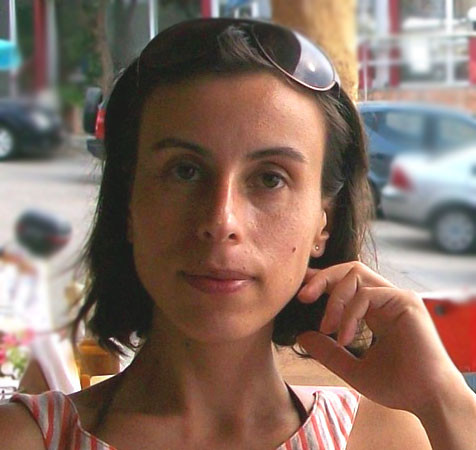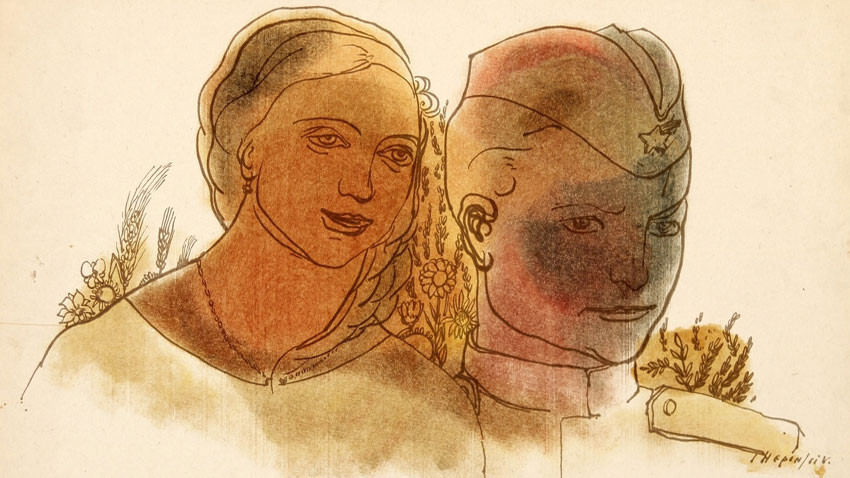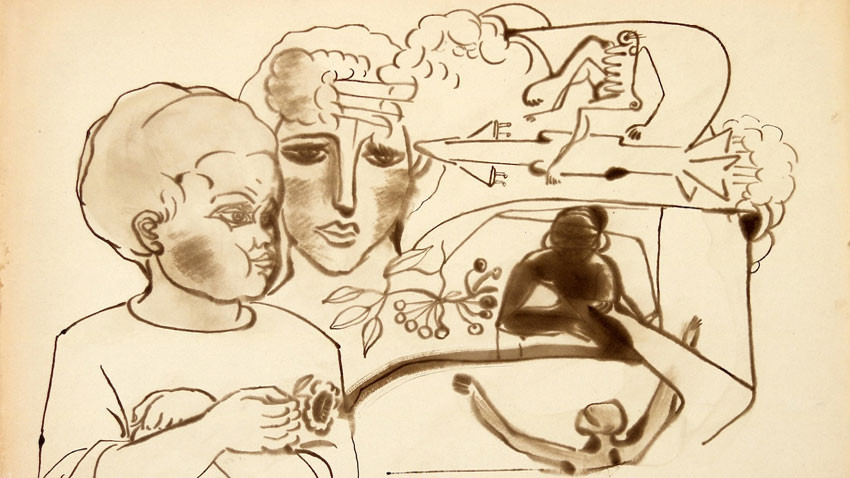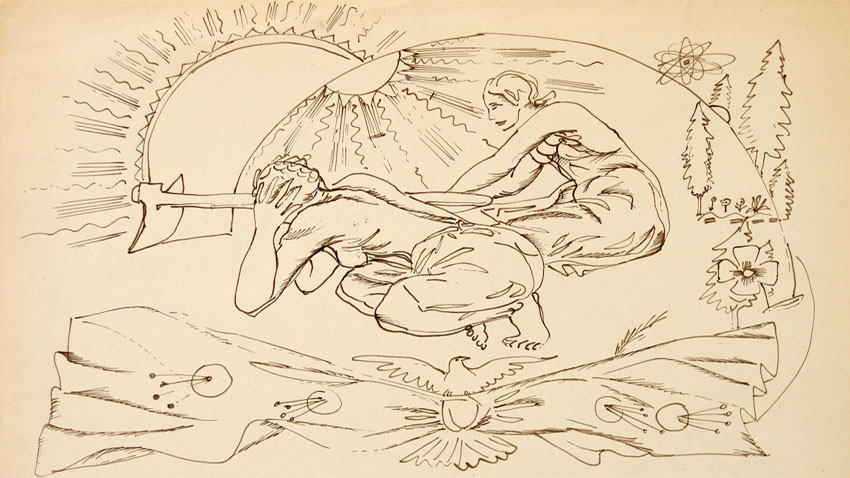Eccentric, nonconformist, crank – he defies any “label” of the times, turning words, born of silence, into images and colours. And though he opens the gates of his intimate world to but a few, in art, he is invariably frank and free.
Nineteen of the earliest, hitherto unshown, pictures and black and white drawings by Dimitar Kazakov – Neron (Nero) are on display at Loran gallery in Sofia until 30 November. Most were drawn using lithographic ink in earth tones, and are very different from the artistic language we are used to seeing in the artist.
 “The exhibition is actually an exception from the way the artist is popularly seen,” says art critic Mariyana Avramova. “They are very early works from the time when he was doing his army service, and the time he started his studies at the Art Academy, and they are a far cry from the interest in folklore and ritual that he demonstrated at a later stage. These works reveal its genesis, foreshadowing his future development. We are displaying a series of works, dedicated to motherhood, as well as sketches he used for future works.
“The exhibition is actually an exception from the way the artist is popularly seen,” says art critic Mariyana Avramova. “They are very early works from the time when he was doing his army service, and the time he started his studies at the Art Academy, and they are a far cry from the interest in folklore and ritual that he demonstrated at a later stage. These works reveal its genesis, foreshadowing his future development. We are displaying a series of works, dedicated to motherhood, as well as sketches he used for future works.

Many of the pictures are a narrative, interpreting iconographic formulas from antiquity, and from Christianity like the Annunciation and Nativity. Yet, in each one there are vivid, interesting characters conveyed in Kazakov’s inimitable style. In other works we discover a bond with family – for example in the picture which should be a triple portrait. But there is just a mother and a child in the picture, the father is rendered symbolically, probably because of the early death of his own father.”

Dimitar Kazakov was born 85 years ago – in a field, under a pear tree – as he himself says, in Tsarski Izvor village near Veliko Turnovo. Having lost his father at an early age, in the morning he would take the cows out to pasture, and the birds chimed in with his childish tears. And as God’s creation was in sight always, he started depicting its beauty any way he could – using dirt, wood, clay. One day, as he was grazing the herd, whittling on a piece of wood, a man from the same village, Lyubo Andreev passed by in his carriage. Intrigued by the boy he signed him up at school and found him a job at the sugar mill in Stara Zagora.
Dimitar Kazakov was 20 when he started his studies at the art school, and later graduated the Art Academy – and all the while he hauled the heavy sacks to throw coal into the fire.

“His life was really difficult,” Mariyana Avramova says. “For a long time he lived in the country, he was conscripted in Gorna Oryahovitsa, then he graduated the academy and was sent to work in different places, but settled in Pazardzhik, where he worked as a factory artist. In 1970 he decided to move to Sofia, but he was refused right of residence in the city so he stayed on in Bozhourishte. It was only in the early 1980s that he was able to go and live in the capital – by that time he had become famous. As a matter of fact he had been a constant rebel against the then prevalent trend in art even as a university student and he had made many enemies. Of course, the aesthetics of the times did affect his own road towards moulding a style of his own, but he quickly shook them off, and this exhibition demonstrates that he really did. Even the works from 1961 which contain symbols of the times do not mean he falls into the category of artists doing works of “socialist realism”.

Because he was eccentric and was not very fond of human company, Dimitar Kazakov was not very appreciated. But his works were – in New York, Paris, Vienna, Tokyo, Toronto – pictures of his being part of the collections of contemporary art at the Louvre, the Pushkin museum in Moscow, the imperial collection in Tokyo. The artist’s style is expressive and stylized and many find resemblances with Chagall, Picasso, or the early 20th century modernists. Dimitar Kazakov passed away in 1992.
English version: Milena Daynova
Photos: galleryloran.com and Diana TsankovaWith Rosencrantz and Guildenstern Are Dead , young Boyan Kracholov - one of the most compelling contemporary Bulgarian theatre directors - makes his debut on the main stage of the Ivan Vazov National Theatre. Kracholov won the 2017 Askeer Award in the..
A thirty-six-hour theater and film marathon will be presented to audiences in Sofia by the students of the National Academy for Theatre and Film Arts "Krastyo Sarafov". The 20th anniversary edition will take place from today until Sunday...
"Tableware", "assembly line", "production process" - this is the terminology of the so-called applied artists of 20th century Bulgaria. But one artist, trapped within the confines of a socialist factory, broke free and gave wings to her talent...
A thirty-six-hour theater and film marathon will be presented to audiences in Sofia by the students of the National Academy for Theatre and Film Arts..
With Rosencrantz and Guildenstern Are Dead , young Boyan Kracholov - one of the most compelling contemporary Bulgarian theatre directors - makes his debut..

+359 2 9336 661
